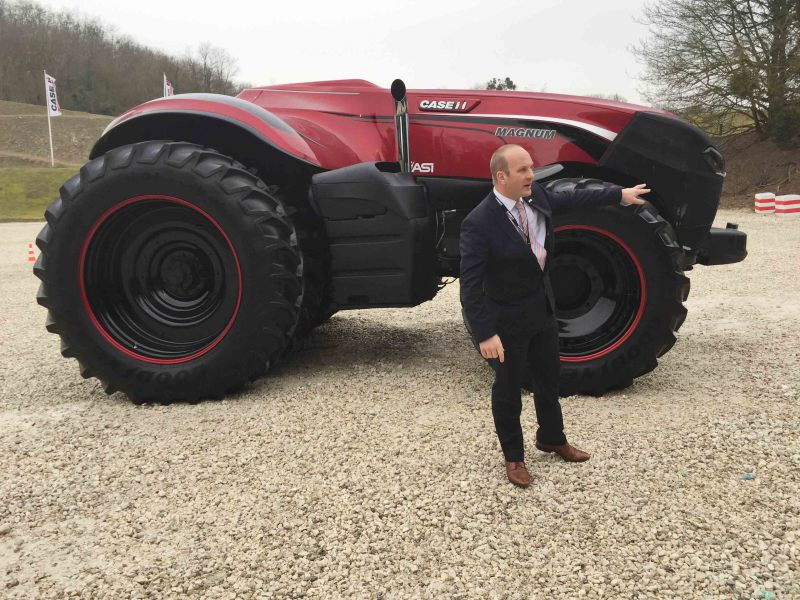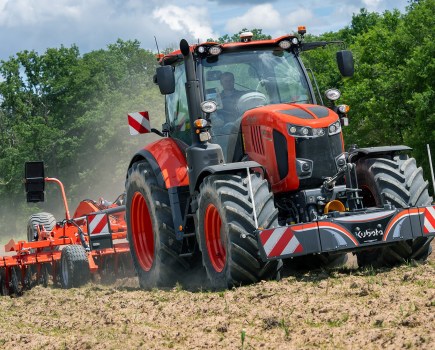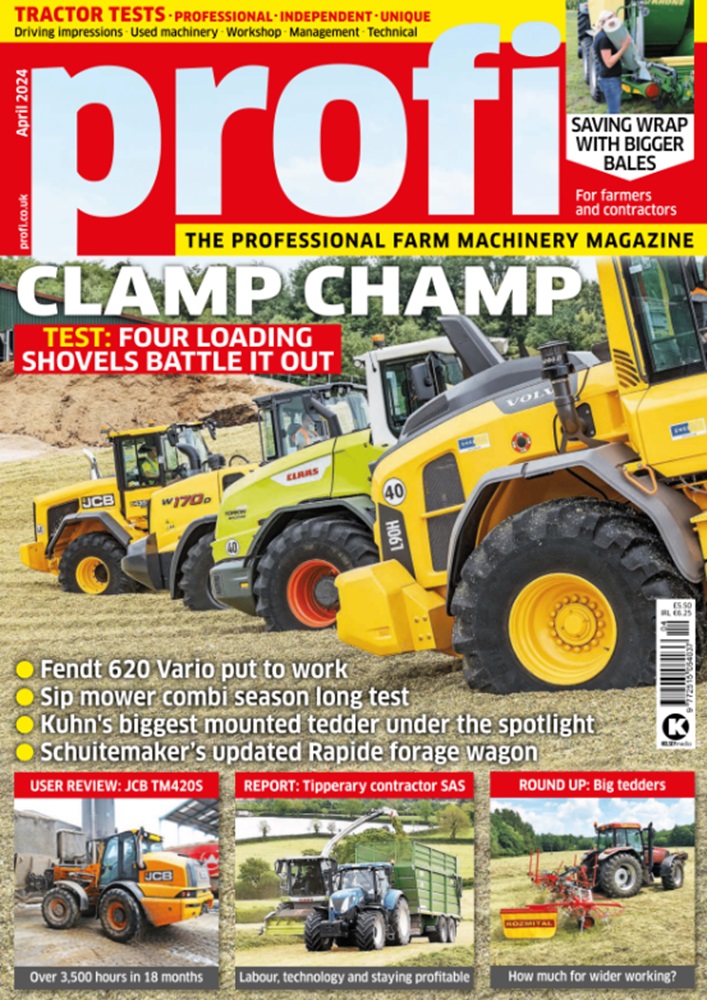The Case IH autonomous tractor is just three years off commercial availability, although at that stage it’s only likely to be sold as a cabbed machine. The cab-less prototype, as pictured here and previewed at the 2016 Farm Progress Show in the US, is now being regarded as a longer term project. This latest time scale update has been announced in the week before European farmers get their first in-the-flesh view of Case IH’s cab-less beast at the SIMA show, in Paris, where the company will be keen to gauge customers’ reactions. Indeed, customer feedback is the next key step along the path to commercial reality, says product marketing manager Dan Stuart. “The technology required for autonomous operation is pretty much all in place. What we need to work on now ahead of 2020 is economic feasibility, customer acceptance of the principles and getting a legal framework in place that gives guidance on how autonomous machines should be operated and the level of autonomy they should have.” Ironically it’s Mr Stuart’s final point that could prove to be the largest hurdle, because currently the rules for both on-road and off-road autonomous operation are different in most countries. Some markets are part-way down the legislative route, whereas others, such as Australia, appear to have no rules whatsoever. “What machinery manufacturers are seeking,” says CNH Industrial’s Corporate Communications Manager, Laura Overall, “is a universal approach to producing a legislative framework for autonomous vehicle operation.” Whether this is a hopeful plea rather than a real possibility remains to be seen. In the meantime, Case IH will be focusing on pilot projects over the next three years to further develop the technology and, just as importantly, to obtain a feel for the level and nature of customer demand. These projects in the first instance will be set up in the US and Europe. The North American project will use the existing Magnum-sized cab-less tractor and concentrate on large-scale, broad-acre applications, whereas the European project is likely to look at the other end of the market — for example, to assess how a 60-100hp Quantum-sized cabbed tractor might benefit from driver-less operation on vineyard/orchard tasks. So, assuming the economics stack up, customers are keen and the legislative framework starts to take shape — yes, those are significant assumptions — then what needs to happen on the technology front between now and 2020 if a cabbed autonomous tractor is to become a commercial reality? “Actually, very little,” says Antonio Marzia, Head of Data Analytics and Services, at CNH Industrial. “Over the next three years we will be upgrading the electronic architecture on all our products with new software, CANbus systems and monitors. Then, if we’re looking to achieve autonomous capability, it’s largely a matter of adding LIDAR (Light Detection And Ranging), high quality cameras, more GPS receivers and modules for communication.” In short, driver-less machine capability is very much a realistic proposition within the next three years. The bigger challenge, as Case IH readily acknowledges, will be getting customers to identify how such machines will fit into today’s, and tomorrow’s, farming systems. It’s a brave new world.
Driver-less tractor for 2020

The Case IH autonomous tractor is just three years off commercial availability, although at that stage it’s only likely to be sold as a cabbed machine. The cab-less prototype, as pictured here and previewed at the 2016 Farm Progress Show in the US, is now being regarded as a longer term project. This latest time scale […]













